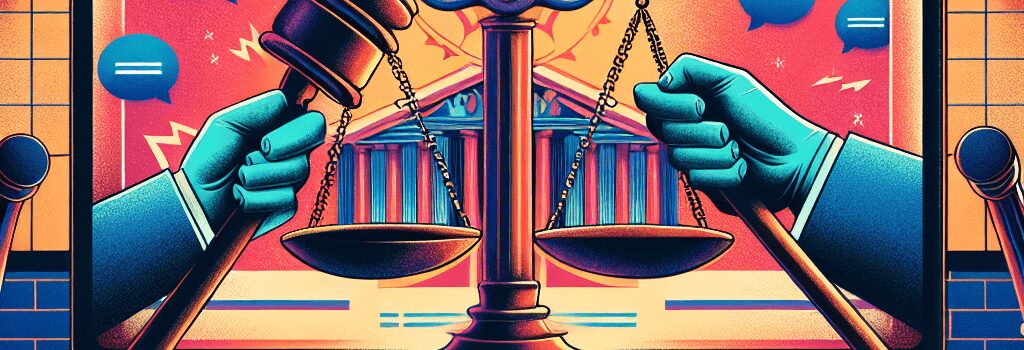FTC Commissioners Fight Back: Legal Battle Over Removal Authority Sparks Nationwide Debate

In a dramatic legal confrontation that has attracted nationwide attention, two Democratic members of the Federal Trade Commission (FTC) have taken their fight to federal court. Commissioners Rebecca Kelly Slaughter and Alvaro Bedoya argue that the recent removal notices issued by former President Trump not only severed their ties to the agency without proper cause but also undermined a century-old legal precedent safeguarding the independence of federal commissions.
Legal Basis and Historical Context
At the heart of the dispute lies a legal principle established in the landmark Supreme Court case Humphrey’s Executor v. United States (1935). The ruling affirmed that a President does not possess unfettered authority to remove certain independent agency officials at will. Specifically, the law permits removal only for inefficiency, neglect of duty, or malfeasance in office. In the current case, Trump’s notices failed to cite any of these causes, instead asserting that the Commissioners’ continued service was “inconsistent with my Administration’s priorities.”
The lawsuit, filed in the US District Court for the District of Columbia, emphasizes that the recent actions echo the controversy from the Roosevelt era when similar forceful removals were challenged. The legal team for Slaughter and Bedoya contends that disregarding established legal standards not only erodes the FTC’s credibility but also sets a dangerous precedent for executive overreach.
Technical Aspects of the Removal Process
Beyond the political and legal arguments, the case also highlights the modern technological measures involved in such removals. Upon receiving the removal notices, the affected Commissioners were immediately disconnected from their FTC email addresses and internal digital infrastructures—a process that involves intricate access control protocols and real-time security measures. The abrupt revocation of digital privileges points to the increasing reliance on automated systems for managing sensitive governmental operations.
Experts in cloud computing and cybersecurity note that these automated removals require tight integration between administrative command systems and digital identity management platforms. Any interruption in these systems could lead to disputes over accountability and control, further complicating the legal narrative surrounding the forced termination of public officials.
Debate Over Administrative Authority and Agency Independence
In addition to the historical arguments, the lawsuit raises concerns regarding administrative autonomy. By invoking a clause from the FTC Act that strictly limits the grounds for removal, the Commissioners argue that the President’s actions undermine the ability of federal agencies to operate without undue political interference. This separation of powers is seen as crucial for agencies tasked with regulating an increasingly technical and complex digital marketplace.
The case has incited a broader discussion among legal scholars and policy experts regarding the balance between democratic accountability and administrative independence. Some pundits argue that a modern, multi-member commission like the FTC must be shielded from precipitous political maneuvers in order to continue protecting consumers and ensuring fair market practices, especially in an era when tech companies and digital platforms influence global economies.
Expert Opinions and Future Implications
Some experts in administrative law and technical policy have weighed in on the potential ramifications of this case. According to Prof. Emily Jennings of the National Institute of Public Policy, “Preventing a President from making arbitrary removals is essential not only for preserving legal consistency but also for maintaining operational stability in agencies critical to public welfare.”
Security analysts also emphasize that the automatic execution of removal orders highlights the need for robust safeguards in governmental IT systems. The integration of legal oversight with cybersecurity best practices is increasingly important as agencies digitize processes ranging from human resource management to decision-making workflows.
Recent Developments and Political Reactions
Republican voices, including FTC Chairman Andrew Ferguson, have sharply disagreed with the Democratic Commissioners’ challenge. Ferguson has publicly supported Trump’s actions, arguing that the Constitution grants a President the authority to remove officials when their service is misaligned with the Administration’s strategic vision. Meanwhile, other high-ranking officials like FTC Commissioner Melissa Holyoak and Executive Director David Robbins have joined the defense, solidifying the internal divide within the agency.
The legal battle continues to evolve, with the case potentially setting a precedent not just for the FTC, but for the functioning of other independent agencies facing similar challenges. Given the recent surge in politically charged administrative actions, further legislative and judicial scrutiny is expected.
Conclusion
The unfolding litigation underscores the crucial interplay between legal precedent, digital infrastructure, and political accountability. As the court deliberates on whether the President’s removal of Slaughter and Bedoya is lawful under established statutes and Supreme Court rulings, the outcome may well define the operational freedom of independent agencies for years to come. Stakeholders across the political spectrum and the tech industry are watching closely, aware that the decision could influence how executive powers are wielded in an increasingly digitized government ecosystem.